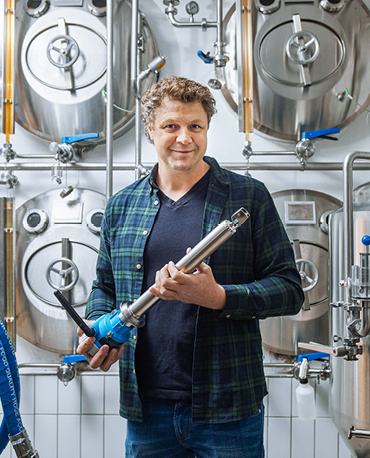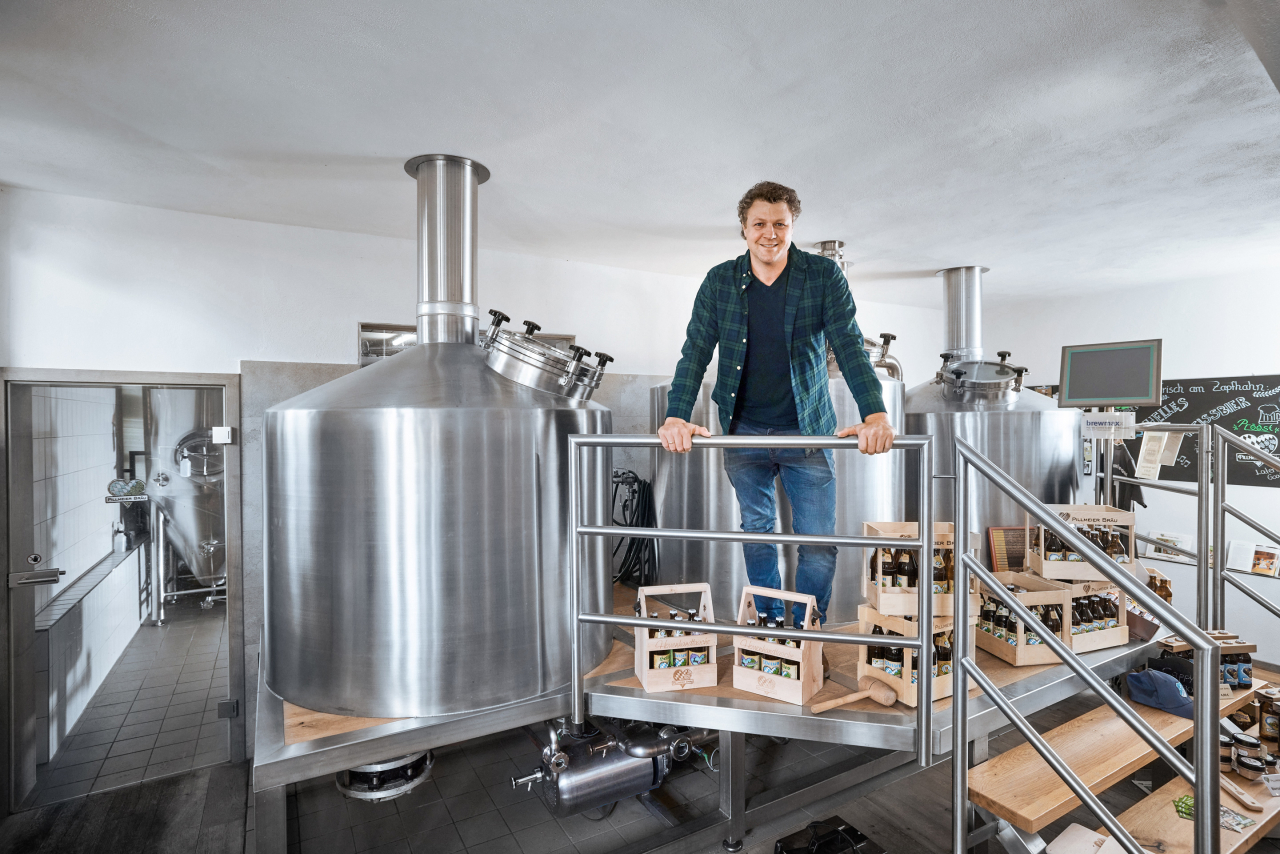Beer in focus
AI doesn’t always have to be the answer. A multi-sensor system such as the QWX43 fermentation monitor supplies data to conventional, cloud-based algorithms – another way for users to benefit from digitalization. Microbrewer Armin Pillmeier uses real-time analysis for precise control of fermentation processes.

DIGITALIZATION
Mr Pillmeier, the microbrewery that yourun uses the kind of technology normally seen in larger breweries.
Precisely because my company is so small, it’s important to automate as many processes as possible. It’s just me and one part-time employee, so this is the only way we can brew 1,000 hectoliters of beer a year. The fermentation monitor gives me the peace of mind I need to take care of other things, such as sales.
What exactly does the system do to keep your mind at ease?
Without the monitor, I would have to take daily samples from the fermentation tank. This takes a quarter of an hour, and an open tank is always an infection risk, no matter how cleanly you work. Then I would have to measure the sample densities in a hydrometer and enter the measurements into a spreadsheet. The next step is sending off the samples for the alcohol content to be measured and then waiting two days for the results. The fermentation monitor displays all of this information in real time.
Do you use the measurements for anything else beyond analytics?
The values are fed directly into the process control system using Netilion – the Endress+Hauser IIoT ecosystem – and I use them to actively control the fermentation. The valves can be controlled digitally, so the fermentation process is fully automatic. This is particularly important on weekends when we organize events, as it allows me to take care of our guests in peace and quiet while brewing quality beer at the same time.

You have been working with the QWX43 fermentation monitor for a year now. What are your experiences with it so far?
Positive, every step of the way. Installation was simple and the system has been running smoothly ever since. Before I became a full-time brewer, I spent 10 years planning and optimizing
brewing systems as a project engineer. From my experience, I can safely say that there is no comparable device on the market that generates such benefits from data and algorithms. Above all, its measurement accuracy is unparalleled.
Are there any types of beer for which the monitor is particularly useful?
Yes, it’s particularly important to have fermentation under control when I brew my non-alcoholic beer. Extracting the alcohol from a conventional beer after fermentation is a very complex, technical process. Instead, I use a special variety of yeast that produces only trace amounts of alcohol and I optimize the taste by dry-hopping – that means adding hops to the fully fermented beer, which restarts the fermentation process. This is where the fermentation monitor helps me to stay below 0.5 percent alcohol by volume.
With Bock-style beer, it’s the reverse. This variety has a high alcohol content of over six percent, which stresses the yeast toward the end of the brewing process. Fermentation takes longer than with other varieties of beer, but thanks to this measuring instrument I always know what stage it is at.
Published 05.09.2024, last updated 16.09.2024.
Dive into the world of the process industry through new exciting stories every month with our «changes» newsletter!









